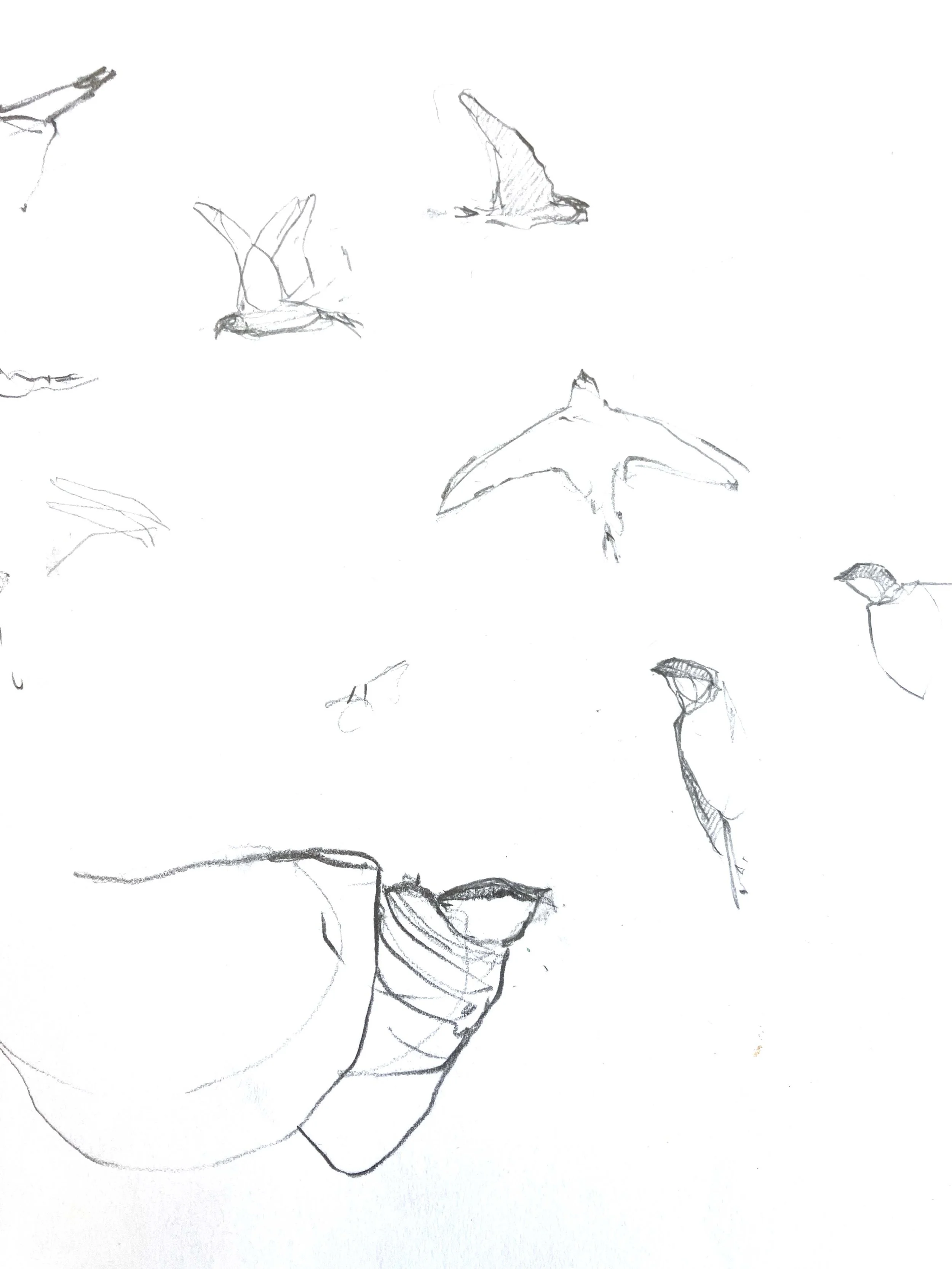A FUTURE FOR SWIFTS
With swift numbers declining by 50% in Hampshire over the past 23 years, and our skies noticeably empty of their distinctive calls this year, Estate Owner, Henry Edmunds reflects on the plight of this charismatic migratory bird.
‘It had been a gloomy day, warm but with a thick oppressive cloud cover that hung heavy and low. All colour seemed subdued, the entire landscape clothed in an all pervading matt green. As the sun sank towards a horizon of broken hills and the small copses that crown them, a rift opened in the dark sky.
Shafts of blinding light picked out the Hawthorn hedges, whose leaves now shone in reflected light. Beneath them, great swathes of Purple Centurea glowed and crowds of butterflies danced between the blooms. Companies of Gatekeepers, Ringlets, Meadow Browns accompanied by a smattering of Dark Green Fritillaries and Small Coppers, jewels of the field fringe.
A view across the farm, where the sounds of peacock mingle with the welcome cries of swifts across the summer sky.
Focussing in more detail, multitudes of tiny iridescent blurs seemed to hang in the still air above a field glowing with Poppy red and the pink of Fumitory.
Then my eye was caught by distant black crescents that turned and twisted between the shafts of light, disappearing below the hedge tops to return in soaring loops on flickering wings that demonstrated a mastery of their aerial domain. Were these air sprites, or shadow spirits of impossible agility? I was the fortunate spectator as a company of Swifts quartered the air above an area left wild to become rank with yellow Cruciferous flowers. As beetles and aphids soared on their aerial flights, so the Swifts took their share, collecting them by scores to turn a mixed bag of insects into a compressed ball to be fed to their hungry chicks.
Such a sight is becoming ever less frequent. Swift numbers are falling due to a declining invertebrate fauna in the sterile prairies that now pass for countryside. Mindless housing renovation has also taken a heavy toll. We have all seen the modernisation of council estates in recent years. Doubtless much valuable and necessary improvements have been made. But was it necessary to fit new soffits under the eaves which have prevented Swifts gaining access to the little gaps under the roof edges where they have nested for generations?
Studies of swifts in the eaves on the Estate, by Artist in Residence Sally Newton.
Swifts still nest in holes in the ancient pines of the Caledonian Forest. I have seen them using rock fissures at 5,000 feet on the island of Crete. However now, most Swifts are reliant upon the crevices left in buildings. Swifts, being so supremely adapted to their aerial medium, only come in contact with a rigid structure during the breeding season, where they will sleep in pairs in their nesting site.
Due to their tiny feet, they do not perch and must be able to drop out of their nest to take to the sky again. Non breeding swifts roost on the wing at around 10,000 feet. No other bird is so highly adapted to life in the sky, even mating whilst on the wing. Our Swifts winter in Southern Africa, over the Congo rainforest and Mozambique. They match their return with the hatch of a particular insect on the extreme western tip of Africa. After feeding here for a few days, they forge on and arrive back at their nesting sites in the UK some 10 days later. They are site faithful and will return year on year, one bird was found to be 16 years old.
As organic farmers, we provide essential feeding habitats for Swifts but do we offer enough sites suitable for breeding? Here, I am installing Swift boxes, together with a repeating tape of Swift calls that plays in the early morning and late evening, to attract them in. I have seen Swifts dashing around our yard on a couple of occasions and hope that this might presage a breeding attempt next year. There is currently a good deal of interest and enthusiasm for Swift conservation and information about nest boxes and local Swift groups is readily available on the internet. www.hampshireswifts.co.uk, www.swift-conservation.org or contact the RSPB and BTO’.
words by Henry Edmunds F.R.E.S. (edited by Susie Edmunds & Sally Newton)


